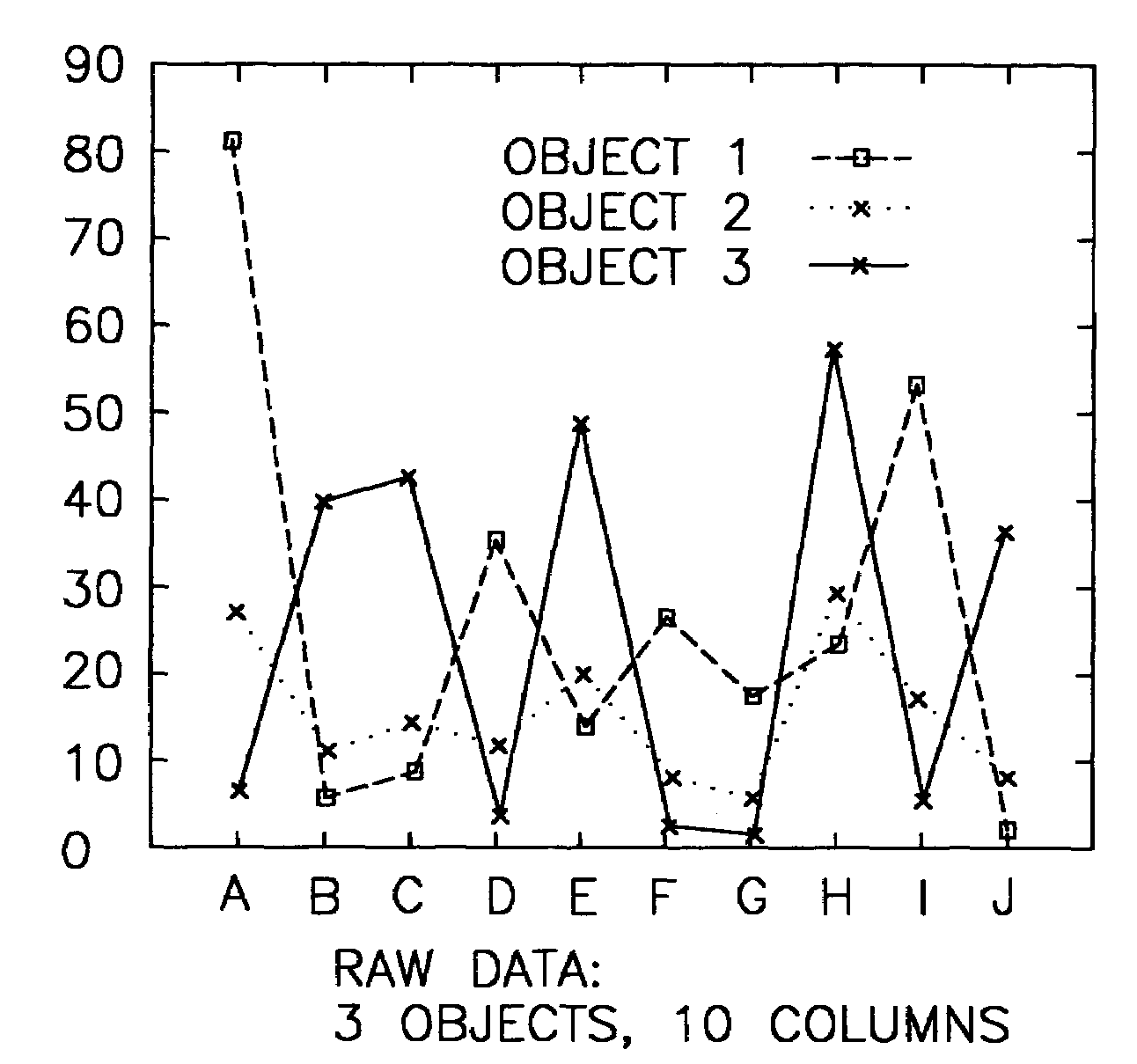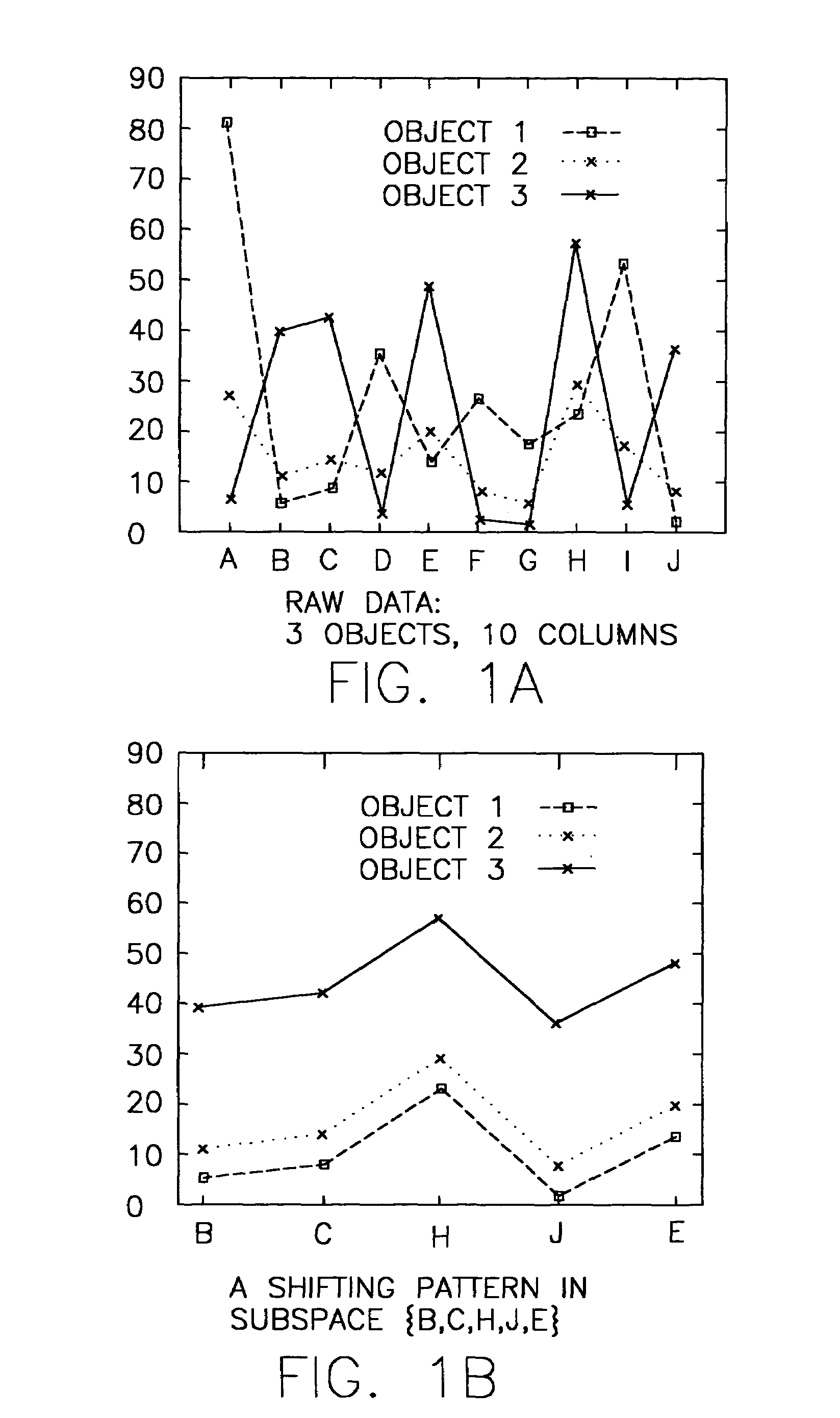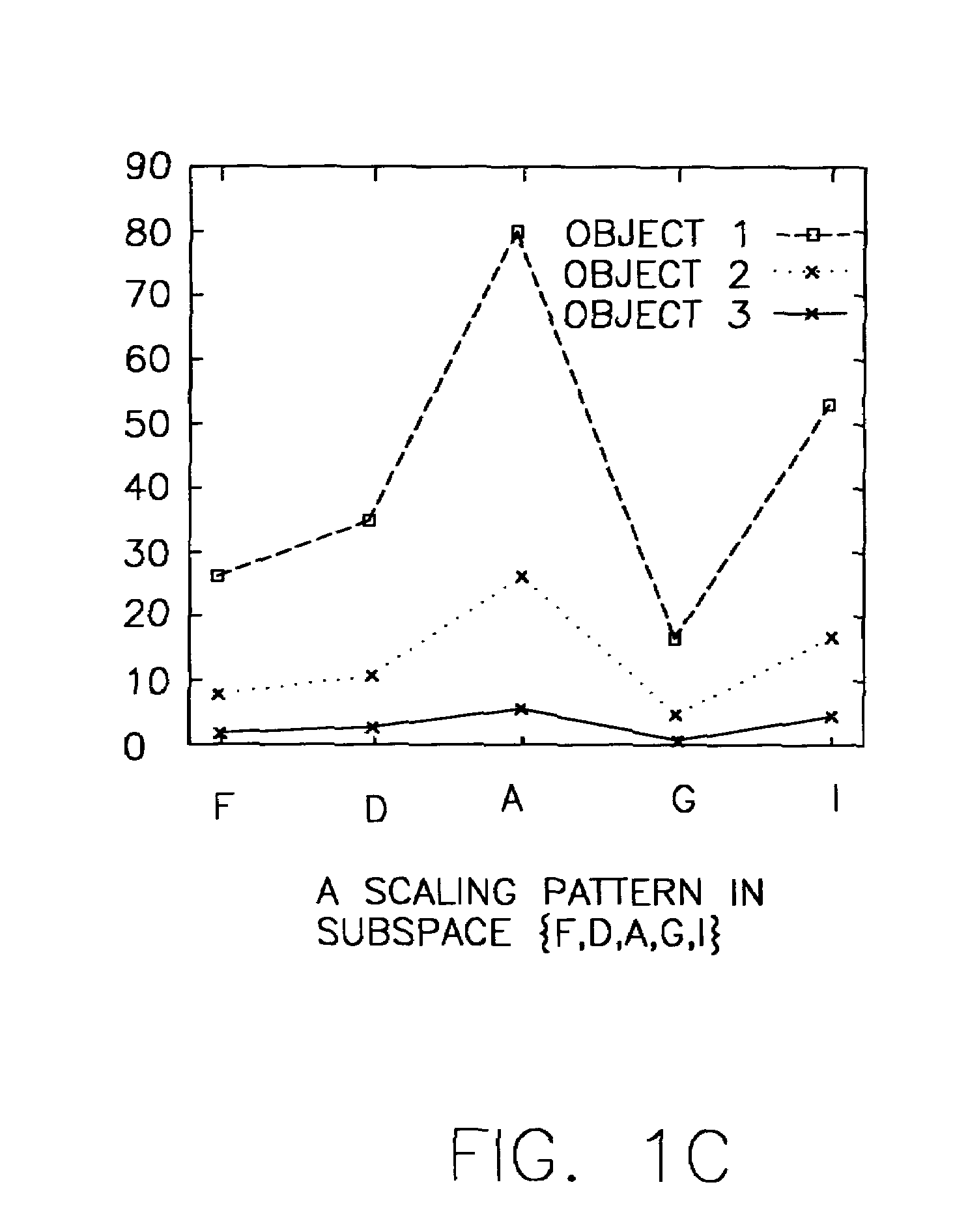System and method for sequence-based subspace pattern clustering
a subspace pattern and sequence-based technology, applied in the field of subspace pattern clustering, can solve the problems of large dataset clustering, lack of efficient algorithm, and inability to achieve large-scale data model practicability,
- Summary
- Abstract
- Description
- Claims
- Application Information
AI Technical Summary
Benefits of technology
Problems solved by technology
Method used
Image
Examples
Embodiment Construction
[0039]The choice of distance functions has great implications on the meaning of similarity, and this is particularly important in subspace clustering because of computational complexity. Hence, there is broadly contemplated in accordance with at least one preferred embodiment of the present invention a distance function that makes measuring of the similarity between two objects in high dimensional space meaningful and intuitive, and at the same time yields to an efficient implementation.
[0040]Finding objects that exhibit coherent patterns of rise and fall in a tabular dataset (e.g. Table 1) is similar to finding subsequences in a sequential dataset (e.g. Table 2). This indicates that one should preferably unify the data representation of tabular and sequential datasets so that a single similarity model and algorithm can apply to both tabular and sequential datasets for clustering based on pattern similarity.
[0041]Preferably, sequences are used to represent objects in a tabular datas...
PUM
 Login to View More
Login to View More Abstract
Description
Claims
Application Information
 Login to View More
Login to View More - R&D
- Intellectual Property
- Life Sciences
- Materials
- Tech Scout
- Unparalleled Data Quality
- Higher Quality Content
- 60% Fewer Hallucinations
Browse by: Latest US Patents, China's latest patents, Technical Efficacy Thesaurus, Application Domain, Technology Topic, Popular Technical Reports.
© 2025 PatSnap. All rights reserved.Legal|Privacy policy|Modern Slavery Act Transparency Statement|Sitemap|About US| Contact US: help@patsnap.com



